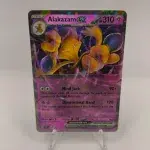Pokémon Cards Explained: A Beginner’s Guide to the TCG
Introduction
Pokémon trading cards have been around for nearly three decades and remain one of the most popular trading card games in the world. This guide (Pokémon cards explained) gives you in simple terms, covering how they work, why they are valuable, and how to start collecting.
If you are new to Pokémon cards, you may be wondering what they are, how the game is played, and how collectors decide what to buy. This guide will cover everything you need to know, from card types and gameplay basics to rarities, collecting strategies, and beginner tips. By the end, you will feel confident stepping into the world of the Pokémon TCG.

A Short History of the Pokémon TCG
The Pokémon TCG was first released in Japan in 1996 by Media Factory and arrived in English in 1999, published by Wizards of the Coast. The first set, known as Base Set, introduced iconic cards like Charizard, Blastoise, and Venusaur. These early cards remain some of the most valuable collectibles in the hobby.
Over time, the game evolved with new mechanics. EX cards appeared in the 2000s, followed by GX and Tag Team cards in the Sun & Moon era. The Sword & Shield era introduced V, VMAX, and VSTAR mechanics. Today, in the Scarlet & Violet series, full art illustration rares and gold secret rares are highly prized.
The history matters because older cards hold nostalgic value, while modern sets attract new players and collectors. Understanding the timeline helps collectors decide whether to focus on vintage, modern, or a mix of both.
The Global Popularity of Pokémon Cards
Pokémon cards are more than just a game or collectible. They are a cultural phenomenon. By 2023, over 52 billion Pokémon cards had been printed worldwide. Cards are translated into more than 10 languages and released in regions across North America, Europe, and Asia.
The game’s popularity surged during the pandemic when people rediscovered old collections and began chasing modern sets like Hidden Fates and Evolving Skies. YouTube channels, TikTok openings, and influencers fuelled interest, bringing in a new wave of collectors and investors.
This popularity matters because it means Pokémon cards hold not only nostalgic and gameplay value but also long-term cultural recognition. Unlike many trading card games that come and go, Pokémon continues to grow across multiple generations.
Understanding this timeline helps collectors decide whether to focus on vintage, modern, or a mix of both, and is an important part of having Pokémon cards explained in context.
Pokémon Cards Explained: What Are They?
Pokémon cards are trading cards featuring characters, trainers, and energy from the Pokémon universe. Each card is part of a larger set and has details like hit points, attacks, and rarity.
Unlike many collectibles, Pokémon cards are both a game piece and a collectible item. Players build decks to battle, while collectors seek rare cards for binders, display, or investment.
Types of Pokémon Cards
Pokémon Cards
The core of the game, representing Pokémon with attacks, abilities, and stats.
- Basic Pokémon can be played immediately.
- Stage 1 and Stage 2 evolutions require evolving from lower stages.
- Special cards include holo rares, EX, V, VMAX, VSTAR, and alternate art cards.
Trainer Cards
Provide support in battle. They may heal Pokémon, draw extra cards, or change gameplay conditions.
Energy Cards
Energy powers attacks. Without it, Pokémon cannot battle. Basic energy includes Fire, Grass, Water, Lightning, Fighting, Dark, and Psychic. Special energy adds unique effects.
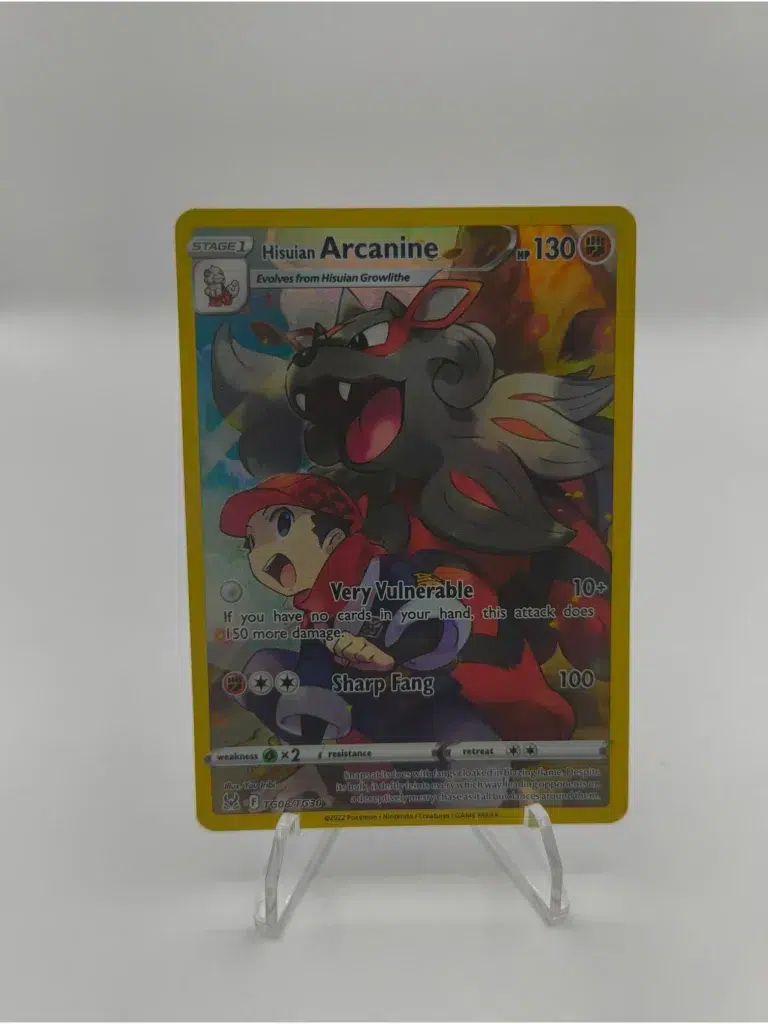
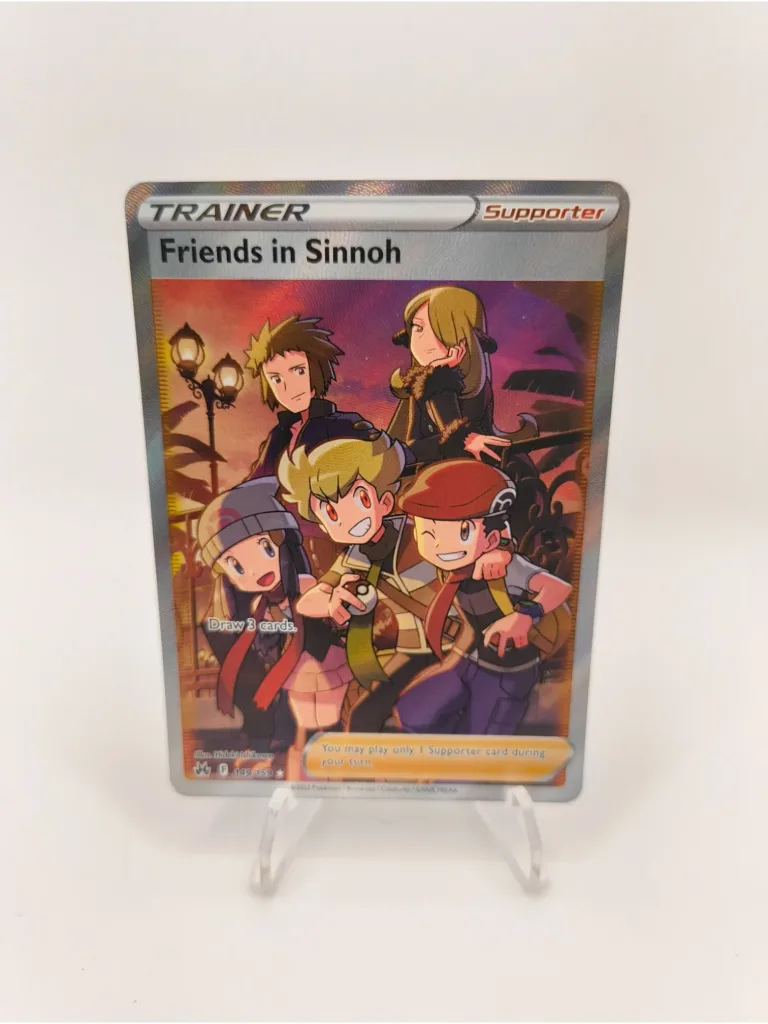

How to Read a Pokémon Card
Every card includes key information:
- Name – Pokémon’s name.
- HP – Health points.
- Type – Fire, Grass, Water, etc.
- Attacks – Moves with energy costs and damage values.
- Weakness/Resistance – Shows type advantages.
- Set Symbol – Identifies which set it belongs to.
- Collector Number – Position within the set (e.g. 45/198).
- Rarity Symbol – Circle = common, diamond = uncommon, star = rare.
👉 Pokémon Card Rarity Explained
Examples of Modern Chase Cards
Each Pokémon TCG set has cards that stand out as the most desirable, often referred to as chase cards. These are usually secret rares, alternate arts, or full art cards featuring popular Pokémon.
- Umbreon VMAX Alternate Art from Evolving Skies is one of the most famous modern chase cards, nicknamed the “Moonbreon.” Its artwork and rarity make it highly valuable on the secondary market.
- Charizard Illustration Rare from Scarlet & Violet 151 has become a fan favourite, combining the most iconic Pokémon with a unique art style.
- Pikachu Gold Rare from Celebrations is another example of a chase card that appeals to collectors because of both nostalgia and rarity.
When you hear collectors talk about chase cards, they are referring to these standout pulls that define a set’s excitement.
How the Pokémon TCG Is Played
The Pokémon TCG is a two-player game where each player uses a 60-card deck.
Gameplay basics:
- Players draw seven cards and place one Basic Pokémon to start.
- Six Prize Cards are set aside. These are claimed each time you knock out an opponent’s Pokémon.
- On your turn, you can attach one Energy card, play Trainers, and attack.
- Pokémon can evolve into stronger forms.
- The game ends when a player takes all Prize Cards, decks out the opponent, or knocks out their final Pokémon.
Competitive play requires skill and deck building, but casual players can enjoy simpler matches. Many collectors never play, but understanding gameplay explains why some cards, like staple Trainers or strong Pokémon VSTAR, become valuable.
For full official rules, see the Pokémon TCG site.
Image idea: Two players battling at a local event with playmats, dice, and cards on the table.
Collecting Pokémon Cards
There are three primary ways to collect:
1. Sealed Products
Sealed products include booster packs, booster boxes, tins, and Elite Trainer Boxes. These stay valuable because of the excitement of unopened cards. Collectors may keep them sealed as investments or open them for the thrill of pulling chase cards.
Image idea: Stacked sealed booster boxes and ETBs.
2. Singles
Singles are individual cards bought separately. Buying singles is the most cost-effective way to complete sets, fill binder gaps, or get specific chase cards.
3. Graded Cards
Graded cards are evaluated for condition and encased in tamper-proof slabs by PSA, CGC, ACE or Beckett. High-grade cards, especially vintage holos and modern alternate arts, often command premium prices.
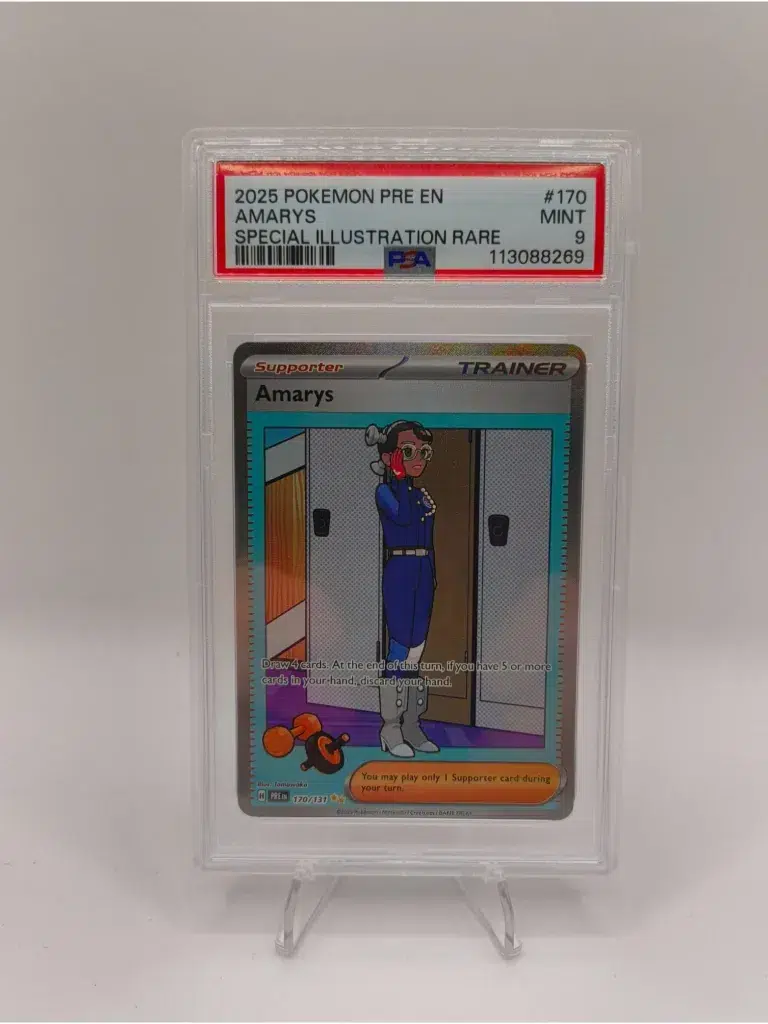
Pokémon Cards Explained by Rarity
Rarity influences both gameplay and collecting, and in this section you will see Pokémon cards explained by their rarity symbols and examples.
| Rarity name | How it appears on the card (symbol) | Notes and examples |
|---|---|---|
| Common | black circle | Basic cards found in most packs |
| Uncommon | black diamond | Often Stage 1 Pokémon or Trainer cards |
| Rare | 1 black star | In Scarlet and Violet, rares are holo by default |
| Reverse Holo | varies (same symbol as base rarity) | Foil background version of common, uncommon, or rare |
| Double Rare | 2 black stars | Example: Miraidon ex, Koraidon ex (SV Base) |
| Triple Rare | 3 black stars | Example: certain Tera ex cards in SV era |
| Ultra Rare | 2 silver stars | Full art Pokémon or Trainers; example: Gardevoir ex full art |
| Illustration Rare | 1 gold star | Art focused cards; example: Arcanine Illustration Rare |
| Special Illustration Rare | 2 gold stars | Premium alternate art; example: Charizard ex SIR |
| Hyper Rare | 3 gold stars | Gold foil cards; example: Ultra Ball gold card |
| Shiny Pokémon | varies | Appears in special sets like Shining Fates and Hidden Fates |
| Promo | black star with PROMO stamp | Included in tins, boxes, events |
Examples of modern chase cards include Umbreon VMAX Alternate Art from Evolving Skies and Charizard Illustration Rare from Scarlet & Violet 151.

Collecting Strategies
For new collectors, the best way to understand the hobby is to see Pokémon cards explained through different collecting styles such as casual, set completion, or investment.
Different collectors approach the hobby in different ways:
- Casual collecting: Buy cards you enjoy without worrying about completing sets.
- Set completion: Work through entire sets card by card, filling binders.
- Character collecting: Focus on your favourite Pokémon, such as Pikachu or Charizard.
- Investment collecting: Keep sealed products or graded cards for future value.
- Competitive play collecting: Focus on staples needed for tournament decks.
Most collectors start casually and then find a style that suits them.
Sealed vs Singles vs Graded: Pros and Cons
Sealed Products
- Pros: Exciting to open, investment potential if kept sealed.
- Cons: Risky if opened, value depends on set popularity.
Singles
- Pros: Efficient way to get what you want, cheaper for completing sets.
- Cons: No surprise factor, high-demand cards can still be expensive.
Graded Cards
- Pros: Protected condition, higher resale value, prestige in collecting.
- Cons: More expensive, less flexible than raw cards.
Why People Collect Pokémon Cards
- Nostalgia – Many collectors grew up with the franchise.
- Artwork – Stunning illustrations make cards desirable.
- Investment – Rare cards can appreciate in value.
- Community – Trading and events create connections.
- Gameplay – Some collectors play as well as collect.
FAQs: Common Questions from Beginners
The following common questions provide Pokémon cards explained for beginners who want quick, simple answers.
Are Pokémon cards worth money?
Yes, especially rare cards, vintage sets, and high-grade slabs.
How do I know if a card is rare?
Check the rarity symbol and learn the differences between common, uncommon, rare, and secret rare.
Are Japanese Pokémon cards worth more?
Sometimes. Japanese sets often release earlier and may include cards not printed in English.
Should I grade modern cards?
Grading is best for cards in mint condition or those with strong long-term demand.
What is the most valuable Pokémon card?
The 1st Edition Base Set Charizard in PSA 10 is among the most valuable, selling for hundreds of thousands.
How do I protect my cards?
Use penny sleeves, top loaders, and binders. Keep cards away from moisture and sunlight.
What are chase cards?
Chase cards are the rarest and most desirable cards in a set. Each new release has chase cards collectors pursue.
What is an ETB?
An Elite Trainer Box, a sealed product containing booster packs, sleeves, dice, and other accessories.
What are promo cards?
Special cards included in tins, boxes, or event giveaways. They are often unique and not part of main sets.
Are Japanese Pokémon cards better quality?
Yes, Japanese cards are widely regarded as having higher print quality, sharper edges, and better centering than English cards.
Can Pokémon cards be an investment?
While no collectible is guaranteed to increase in value, sealed products and graded chase cards have shown strong long-term performance compared to modern commons.
What are promo cards?
Promo cards are special releases included in tins, boxes, or as event exclusives. They are often unique and can become highly collectible over time.
Is it worth collecting sealed products?
Yes, sealed booster boxes and ETBs can hold value as they become rarer over time. However, you need proper storage to prevent damage.
The Role of Japanese and International Cards
Japanese Pokémon cards often release weeks or months before English versions. Many collectors chase Japanese cards for their unique print quality, exclusive promos, and early access to new artwork. Sets like VMAX Climax, Shiny Star V, and VSTAR Universe became legendary in Japan before their English counterparts released.
International printings, including Chinese, Korean, and Indonesian sets, are also growing in popularity. These versions can be more affordable entry points for collectors outside English and Japanese markets.
For new collectors, it is worth knowing that Japanese cards often have sharper printing, different holo patterns, and exclusive cards that may never be released elsewhere. Some collectors focus solely on Japanese cards as a niche.
Including Japanese, Chinese, and Korean printings in your binder is another way to see pokemon cards explained beyond just English releases.
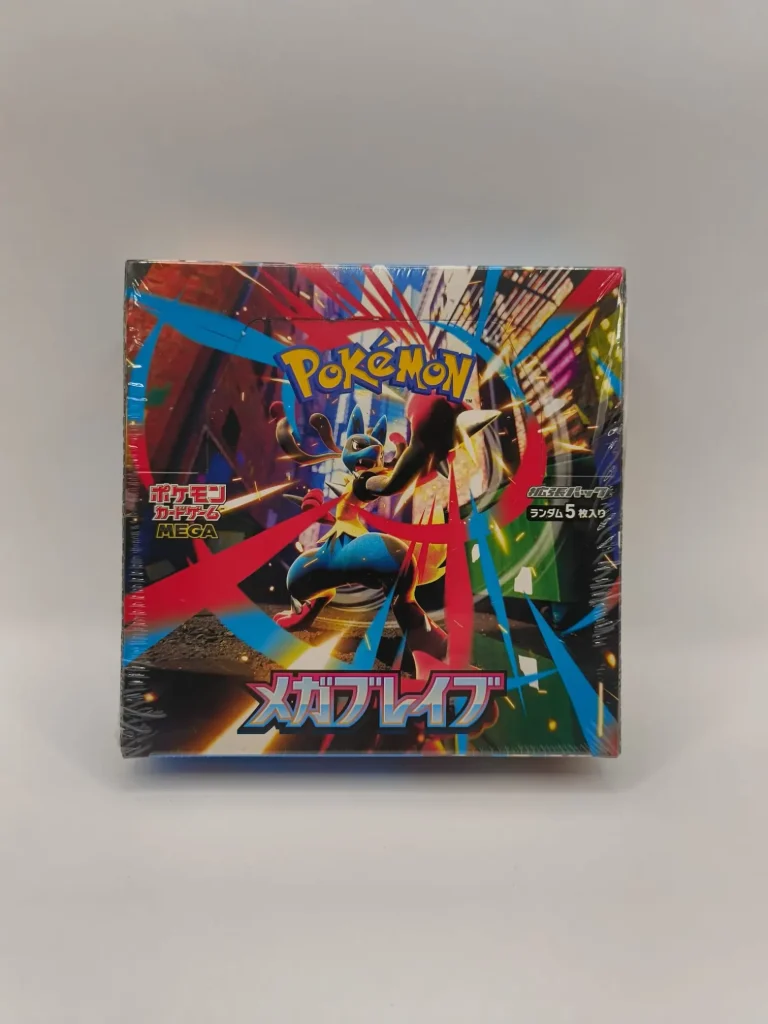
Conclusion
This guide has given you Pokémon cards explained from the basics of gameplay to collecting and rarity. Pokémon cards are a hobby that combines gameplay, collecting, art, and community. For beginners, the best way to start is by understanding card types, rarity symbols, and collecting strategies. From sealed booster packs to singles and graded gems, there are countless ways to enjoy the Pokémon TCG.
Whether you want to open packs for fun, build competitive decks, or invest in rare cards, the hobby has something for you. The key is to start simple and enjoy the journey.
👉 Ready to put what you learned into practice? Browse Pokémon Trading Cards Today and see Pokémon cards explained in action as you explore singles, sealed, and graded cards.

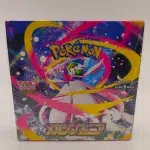

![Aromatisse [Master Ball] #39 - Pokemon English - Near Mint -front Aromatisse [Master Ball] #39 - Pokemon English - Near Mint -front](https://ripperholics.com/wp-content/uploads/2025/08/IMG_20250826_150800595-150x150.webp)
